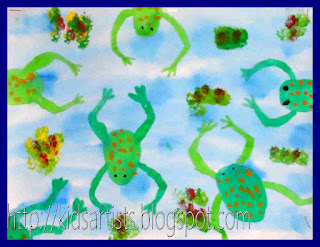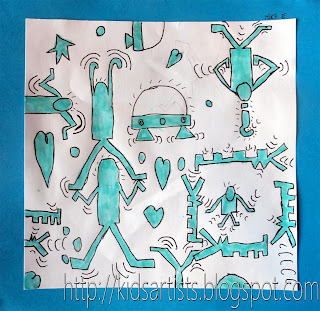Made by students of grade 5
You need:
- white drawing sheet
- metallic gel pens
- glue and figure scissors
- coloured construction paper for background
Gaudi House, Barcelona
Art Nouveau was applied to everyday objects like jewellery and furniture, but also on fences, balconies and facades. Art Nouveau artists used organic shapes, like plants and birds, eggs and women. The lines express emotion. In Paris you will discover Jugendstil in some accesses to the subway. Gaudi also designed his buildings in this style: elegant whimsical shapes, decorated with mosaic tiles and wrought iron.
Show Jugendstil / Art Nouveau pictures using the digital board. Discuss the features: elegant lines, rounded shapes, often asymmetrical, organic shapes, exuberant.
Outline a saucer on a white drawing sheet and cut it. Draw Art Nouveau shapes and lines using metallic gel pens in three colours. Paste this drawing on a second sheet of white drawing paper. Draw legs, tail and head of a flamingo bird and decorate these parts also with gel pen. Cut the bird with figure scissors leaving a white edge. Paste the art work on a long piece of coloured paper that matches the colour of the flamingo.
.jpg)
.jpg)
.jpg)
.jpg)

.jpg)
.jpg)
.jpg)
.jpg)
.jpg)
.jpg)

.jpg)
.jpg)
.jpg)
.jpg)
.jpg)
.jpg)
.jpg)
.jpg)


.jpg)
.jpg)
.jpg)
.jpg)
.jpg)
.jpg)
.jpg)
.jpg)
.jpg)
.jpg)


.jpg)
.jpg)
.jpg)
.jpg)


.jpg)

.jpg)



.jpg)
.jpg)
.jpg)
.jpg)
.jpg)
.jpg)
